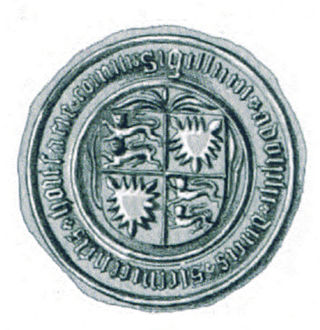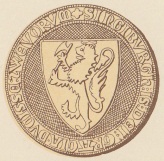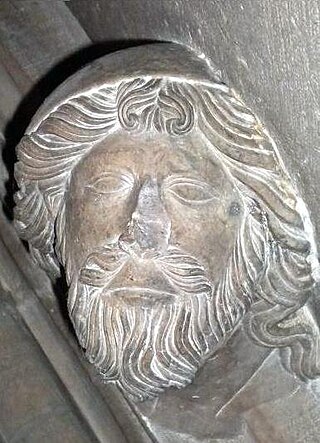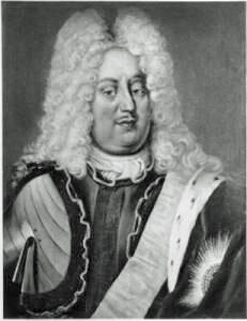Related Research Articles

The Duchy of Schleswig was a duchy in Southern Jutland covering the area between about 60 km north and 70 km (45 mi) south of the current border between Germany and Denmark. The territory has been divided between the two countries since 1920, with Northern Schleswig in Denmark and Southern Schleswig in Germany. The region is also called Sleswick in English.

Princess Ingeborg of Denmark, was a Princess of Sweden by marriage to Prince Carl, Duke of Västergötland.

Haakon V Magnusson was King of Norway from 1299 until 1319.

Princess Margaretha of Sweden was a member of the Swedish Royal Family by birth and the Danish Royal Family by marriage. She was the elder sister of Crown Princess Märtha of Norway and Queen Astrid of the Belgians.

Valdemar III (1314–1364) was King of Denmark from 1326 to 1329, while he was underage; he was also Duke of Schleswig as Valdemar V in 1325–26 and from 1330 to 1364. He was a rival king set up against the unsuccessful Christopher II and was widely opposed by his subjects. His term was ended when he abdicated. Sometimes the earlier King Valdemar the Young (c. 1209–1231) is also referred to as Valdemar III.
Ingeborg is a Germanic feminine given name, mostly used in Germany, Denmark, Sweden and Norway, derived from Old Norse Ingiborg, Ingibjǫrg, combining the theonym Ing with the element borg "stronghold, protection". Ingebjørg is the Norwegian most used variant of the name, and Ingibjörg is the Icelandic variant.

Adolphus XI of Schauenburg, as Adolph I Duke of Schleswig, and as Adolph VIII Count of Holstein-Rendsburg, was the mightiest vassal of the Danish realm.

Ingeborg of Norway was a Norwegian princess and by marriage a Swedish royal duchess with a position in the regency governments in Norway (1319–1327) and Sweden (1319–1326) during the minority of her son, King Magnus Eriksson. In 1318–1319, she was Sweden's de facto ruler, and from 1319 until 1326, she was Sweden's first de jure female regent. Her role in northern European history is considered of major importance.

Sophia of Denmark was Queen of Sweden as the consort of King Valdemar.
Rikissa Birgersdotter, also known as Rixa, Richeza, Richilda and Regitze, was Queen of Norway as the wife of the co-king Haakon Haakonson, and later Princess of Werle as wife of Henry I, Prince of Mecklenburg-Güstrow.

Ingeborg Eriksdotter was a Swedish princess, daughter of King Eric X of Sweden, eldest sibling of King Eric XI of Sweden, wife of Birger Jarl, and mother of Kings Valdemar and Magnus III of Sweden.

Ingeborg, Duchess of Öland was a Norwegian princess and a Swedish duchess. She was Duchess of Uppland, Öland and Finland. As a widow, she had a seat in the regency government of her nephew Magnus, who reigned as king of both Sweden and Norway.
Nicholas I was Bishop of Schleswig between 1209 and 1233. Since 1192 he de facto, though not consecrated, officiated during the flight and following royal captivity of his predecessor Bishop Valdemar (1193–1206).

The House of Estridsen was a dynasty that provided the kings of Denmark from 1047 to 1412. The dynasty is named after its ancestor Estrid Svendsdatter. The dynasty is sometimes called the Ulfinger, after Estrid's husband, Ulf Jarl. The dynasty also provided three medieval rulers of Sweden and one of Norway. Their family coat of arms became the coat of arms of Denmark and thereby influenced the coat of arms of Tallinn and the coat of arms of Estonia.
Ingeborg of Denmark was the eldest daughter of Valdemar IV of Denmark and his wife Helvig of Schleswig. By marriage, she was Duchess of Mecklenburg, although she died before her husband succeeded her father-in-law. She was a potential heiress to the Danish throne and was the older sister of Margaret I of Denmark.

Canute Porse the Elder or Knud/Knut Porse was a medieval Danish nobleman and Duke of Samsø, Duke of Halland, Duke of Estonia, and Count of Kalundborg.
Helena Guttormsdotter, fl 1205, was a Swedish noble and landholder, known as the royal mistress of Valdemar II of Denmark.

Carl von Ahlefeldt was a German-Danish statesman. He was a stadtholder and by birth a member of the House of Ahlefeld. He was part of the inner circle around Frederick IV until 1712 and then became Governor-general of Slesvig-Holsten.

Esbern Snare, also known as Esbern the Resolute, (1127–1204) was a høvding, or chieftain, royal chancellor and crusader. His family were members of the powerful Hvide clan. In 1192, during the Crusades and after the fall of Jerusalem, he led a small group of Danish soldiers to the Holy Land. Upon his return, he had the Church of Our Lady, Kalundborg built.

The Siege of Kalundborg, also known as the Siege of Kalundborg Castle, was a siege by Valdemar IV of Denmark on the Norwegian-pledged Kalundborg Castle in 1341 during the Kalundborg War, which is named after the siege. The Danes were forced to retreat after a surprise attack on the Danish camp by Henry II, Count of Holstein-Rendsburg.